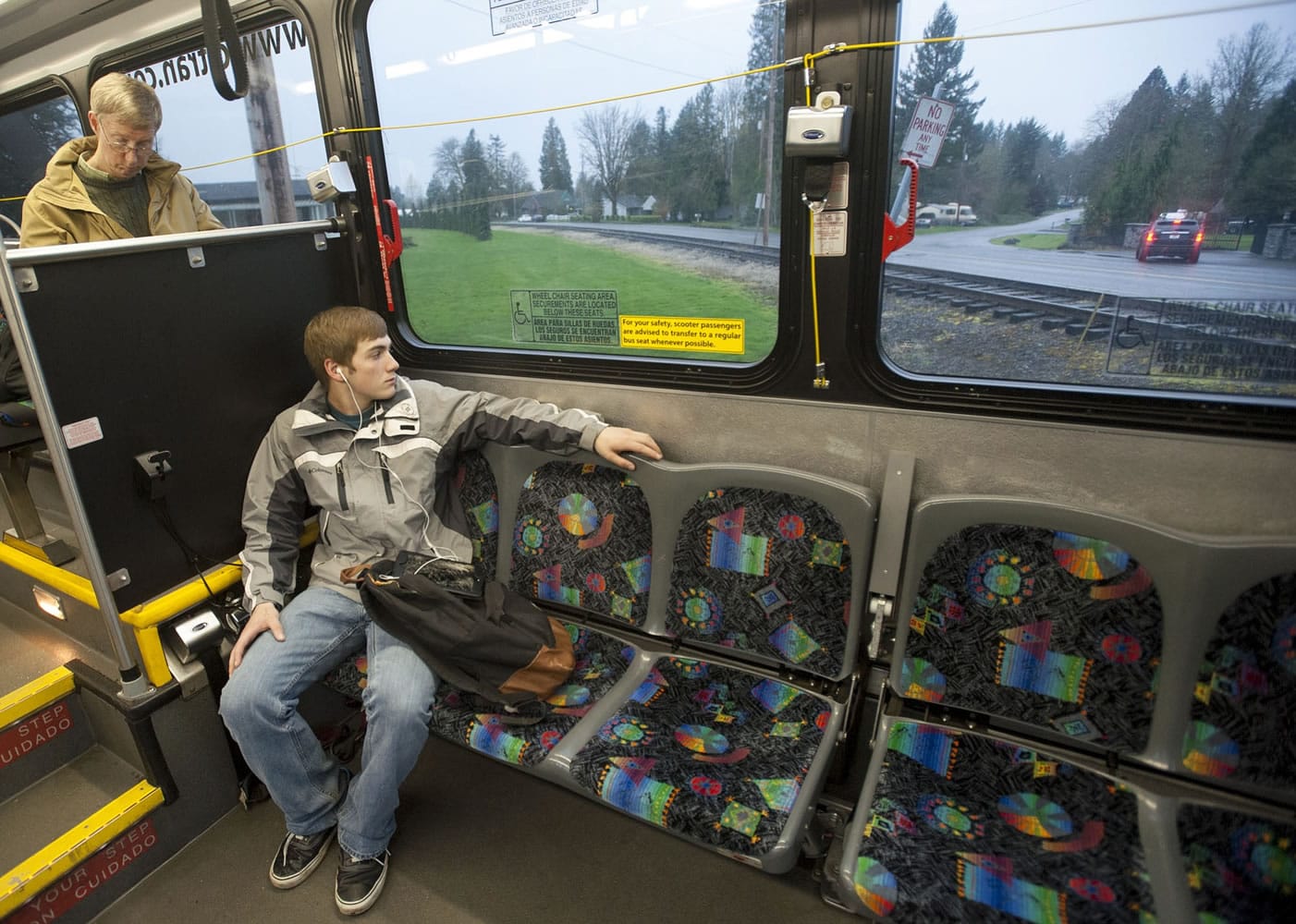C-Tran ridership continued to slide in the first half of 2015, continuing a slow but steady trend of declining passengers in recent years.
The dip comes as the transit agency steps up its efforts to boost ridership and considers new ways to achieve that goal. C-Tran offered free shuttle service to the Clark County Fair this month, and has raised the possibility of additional promotional days with free or discounted service. C-Tran also detailed its marketing and outreach work in a presentation to its board of directors earlier this month.
C-Tran’s overall ridership from January through June was about 3 percent lower than the same period last year. Explaining why, however, isn’t always simple, said Scott Patterson, C-Tran’s director of planning, development and public affairs.
“Certainly gas prices and a number of other economic factors are going to have an impact,” Patterson said. “It’s hard to pinpoint it to one, two or three direct causes.”
Gas prices have generally hovered lower this year than last year in Washington. Locally, Clark County’s economy continues to show strong signs of growth as jobs increase and unemployment drops.
Though slight, C-Tran’s ridership decline is enough to be a concern, Patterson said. And the drop can be attributed almost entirely to C-Tran’s local fixed bus routes, which account for the bulk of its service and saw ridership drop by 4 percent for the first six months of this year.
Other types of service are heading the other direction. Ridership on C-Tran’s commuter service, which carries passengers to Portland on a handful of express routes, is up 2.4 percent. Connector service, though a relatively small piece of C-Tran’s operations, has seen ridership spike by 33 percent this year, according to the agency.
C-Tran has reached out directly to several target groups in an effort to get more people on the bus, Ronda Peck, the agency’s marketing and community outreach administrator, told the C-Tran board last week. Those groups include businesses, seniors, youth, new residents and “leisure users,” she said.
Those efforts have produced positive results in many cases, Peck said. But one group in particular stands out, she added.
“Our most rapidly growing market is seniors,” Peck said.
C-Tran will consider changing demographics — and an aging population — as it evaluates how to grow ridership in the coming years, Patterson said. But it will also be mindful of its own practices, he said. Next month, C-Tran fares will increase for the eighth year in a row. Some of its busiest corridors have struggled with reliability at times. Both undeniably have an impact on ridership, Patterson said.
C-Tran isn’t alone among its peers in seeing its ridership dip recently, Patterson said. But nationally, transit use is reportedly on the rise. Across the river in Portland, TriMet has seen its ridership increase this year after declines in 2013 and 2014, according to its performance reports.
C-Tran is hoping The Vine will give transit ridership a jolt in Vancouver next year. The $53 million project is scheduled to break ground next week, and could open in late 2016, according to C-Tran.
The planned bus rapid transit system will run primarily along Vancouver’s Fourth Plain corridor, replacing the No. 4 and No. 44 routes that cover it now. C-Tran expects the The Vine project to boost ridership along the corridor — by far C-Tran’s busiest — by 30 percent in its first year.
Several factors make the existing bus service on Fourth Plain troublesome at times, Patterson said. The Vine, with its larger vehicles and new boarding stations, aims to improve the efficiency and frequency of bus service along the congested thoroughfare.
The end result, C-Tran hopes, is significantly more people using it.
“When you make transit more reliable,” Patterson said, “you grow ridership.”




